Marx and Einstein
Here is the Wikipeida page on Karl Marx. As for you Einstein, you already know about him. If you are interested in what I have to say about him, Click here.What does Karl Marx have to Einstein? The purpose of this webpage is to address this issue, but let us look at some of Marx photos first.
- Karl Marx is still an important figure in Russia.
- Memorial to Karl Marx in Moscow. The statue says "Proletarians of all world, unite."
- The Bolshoi Theatre is in front of the Marx statue.
- I had a photo with Karl Marx. I feel close to him these days because, until 1990, I lived in an environment where Marx was an evil man. I read secretly some of his writings in 1956. He was a poetic and provocative writer.
- The Red Square is two blocks south from this statue.
- This young lady is showing off her talent there (2010).
- Click here for more photos from Moscow.
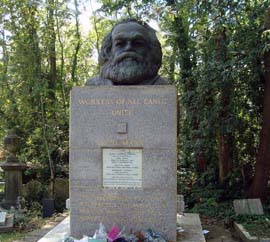
- Marx's grave at London's
Highgate Cemetery.
- Entrance to the Highgate Cemetery.
- I had a photo with him.
- Heavenly Lake at the Cemetery.
- Marx's wrote most of his books and articles in this "Reading Room" at the British Museum in London. The rotunda these days serves as the exhibition room. I go there very often.
- British Museum in London. I make at least one visit to this museum whenever I am in London. I learn lessons there.

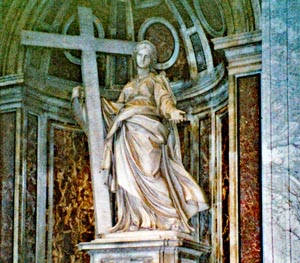

- Karl Marx was born and raised in a small German city called
Trier.
- The city of course quite proud of him, and there is a big statue of Karl Marx.
- His Jewish parents one half of this comfortable house in Trier. This house now serves as the Marx museum.
- This house has a
beautiful quadrangle. with
Marx's bust.
- Trier was important base for St. Helena. Who was St. Helena? She was Emperor Constantine's mother. She was a Christian while Constantine was not. As we all know, the Roman Empire became a Christian empire during the reign of Constantine the Great (306-337). The history is complicated. You can find more about how Christians became a prominent political power from history books. Have seen this statue (or its photo) inside St. Peter's Basilica in Rome? She is St. Helena.
- Trier was in important place during the Roman Empire.
- There is of course a church dedicated to St. Helena and the Constantine the Great. The church building was reconstructed several times during the history.
-
A portrait of Karl Marx
is displayed in this church ground.
- Click here for more photos from Trier.
-
Humboldt University of Berlin used to be one of the greatest academic
centers in the world before World War II. Georg Wilhelm Friedrich Hegel
(1770-1831) was the most prominent name there until then.
Karl Marx (1818-1831) did his graduate work at this University. Marx had a great respect for Hegel, and and his doctoral reseach was based on Hegel's philosophy. However, after reviewing what he wrote, the conservative faculty of the University decided that Marx was totally crazy and rejected his dissertation. Marx submitted his work to the University of Jena, and got his degree in absentia from there (1848).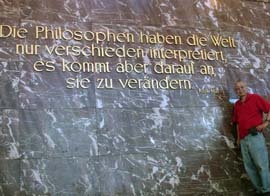
- As soon as you enter the
main building of the Univeristy, you will see this
marble wall carrying what
Marx said about philosophers and those who changed the world.
I was very happy to have a photo of myself with this quotation
from Marx. This photo was taken in 2006. I saw this wall and
became impressed in 1998. I took
a photo of this wall with my film camera (1998).
- What does Marx say there?

There are various ways to translate into English what Marx said in German,
but let us go to his tombstone in London. Marx says there
The philosophers have only interpreted the world in various ways. The point however is to change it.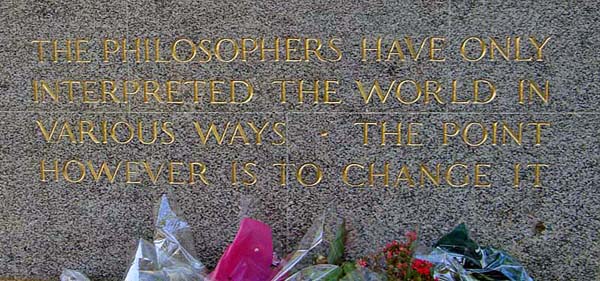
- As soon as you enter the
main building of the Univeristy, you will see this
marble wall carrying what
Marx said about philosophers and those who changed the world.
I was very happy to have a photo of myself with this quotation
from Marx. This photo was taken in 2006. I saw this wall and
became impressed in 1998. I took
a photo of this wall with my film camera (1998).
- Here, Marx could be talking about those could write down their
opinions but could not change the world. Here he was talking
about the philosophers behind those who change the world, since
otherwise they are not worth mentioning.
Marx could also be talking about those philosophers who can change the world according to their own respective philosophers.
However, Marx forgot to mention those who become philosophers while changing the world.
If one changes physics, the new physics changes the world. Indeed, the easiest way to change the world is to change physics. We all know how Newton and Maxwell changed the world. I do not know who were the philosophers behind them.
For the case of Einstein, it is generally agreed that Immanuel Kant was the philosopher behind him. However, many people would insist that that Einstein was his own philosopher. What kind of philosophy did he create? I have been trying to answer this question for some years, and here is the present assessment of my on-going research on this problem.
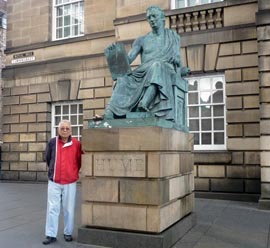
- There then comes the question of how the philosophers formulate
their opinions of the world.
David Hume (1711-1766) was a Scottish philosopher during the enlightenment period. According to him, one's new ideas or opinions come from the experience he/she had gone through. He was talking about physics. Physics is an experimental science.
Einstein's philosophy of physics is most certainly based on his experience of formulating the theory of relativity. It is much richer than Kantianism.
According to R. P. Feynman, the adventure of our science of physics is a perpetual attempt to recognize that the different aspects of nature are really different aspects of the same thing. Here, Feynman talks like a philosopher. He gave his interpretation of the world of physics based on his experience.
Feynman wrote about 150 papers. Presumably he was interested in combining them into one paper. I am interested in this problem, and it was fun for me to combine three of his papers into one. Click here for a story.
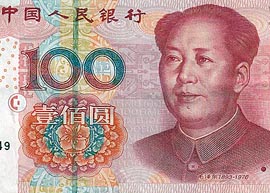
The People's Bank of China
100 Yuans. - China's Mao Zedong started changing his country, and changing China
changes the world. It is safe to say that Karl Marx was Mao's
philosopher. He thought he could use the concept of Marx's
surplus value to convert China's vast labor power into money.
What is the surplus value? We can convert a chunk of mud into bricks. Then there is a price difference between the bricks and the mud. This difference was created by manual labor. Thus, labor = money.
Mao thus ordered every Chinese family to build a backyard crucible to produce steel. Here Mao was showing his limitations. He did not know the steel so produced does not have market values.
Fortunately, Chou Enlai, Deng Xioping, and other enlightened Chinese communists saw that they could transform their labor to money using the Western consumer market. For this purpose, Chou Enlai invited Nixon to China in 1972. He knew what he was doing.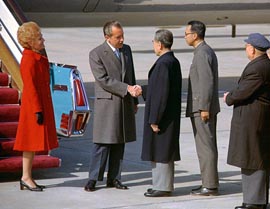
Nixon and Chou in Shanghai (1972). In 1992, during his election campaign, Bill Clinton promised not to trade with China based on China's human rights record. In 1994, he formally broke his campaign promise because the market force had become too strong.
- Let us go back to Einstein. He produced the equation
E = mc2. According to this equation, mass can be
converted into energy. How nice!
Presumably, this happens during nuclear explosions, but we still do
not know how to convert the mass into usable energy. We should not
laugh at Mao who did not know how to convert Chinese labor into money.
The first step toward solving this problem could be to calculate the total world energy consumption per year in terms of mass. How many kilograms of energy do we need per year to support our lifestyle? I used to give the following homework problem when I was teaching modern physics.

T-34 Soviet Tank (above) and M4 Sherman Tank (American). Their weights are about the same. According to Einstein, we need one (or less) of those WWII tanks to meet the yearly energy need for humans. 
- Count the light bulbs in your house. Then estimate
the daily consumption of electric energy by those bulbs.
Estimate the energy consumption by other appliances. Add them
up.
- Estimate in the total electric energy consumption per year by
all Americans in the United States.
- Convert this energy to the mass mass using the formula
mass (in kg) = energy (in joules) / c 2 .
The answer to this question is more or less 200 kilograms. The total world consumption, including street lighting, automobiles, and factory robots, cannot be greater than 100 times the total electric energy consumption in the United States. The answer thus is 20 tons. This weight can be compared with that of one T-34 (Soviet) or one Sherman (American) tank, each weighing more or less than 25 tons depending on the armaments it carries.
I placed the T-34 before the Sherman tank because tanks are closer to Russian hearts than are to Americans. These two tanks played their major roles in Korea during the Korean War (1950-3). I was there during the war, and both of them are dear to my heart. Thus, I sometimes measure the weight heavy items in terms of the number of those WWII tanks, in accordance with the philosophy formulated by David Hume. Like to see more tank photos?
You are of course invited to carry out a more accurate calculation. You would agree that this calculation is the very first step toward solving the world energy problem using Einstein's E = mc2.
- Count the light bulbs in your house. Then estimate
the daily consumption of electric energy by those bulbs.
Estimate the energy consumption by other appliances. Add them
up.
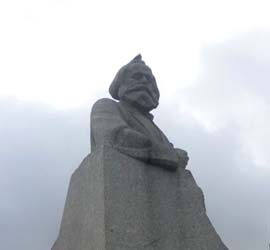
|
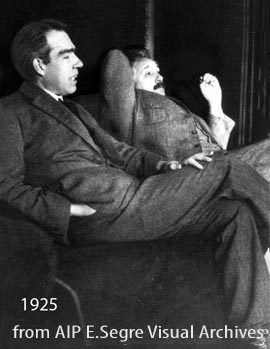
|
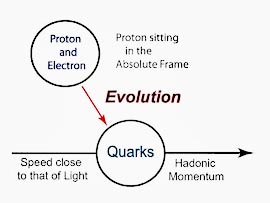
|
| |
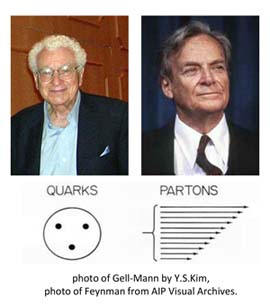
|
-
In 1913 (one hundred years ago), Bohr was worrying
about why the energy levels of the hydrogen atom are discrete. On
the other hand, Einstein was looking for experimental tests for his
theory of relativity. They could not focus their problems because
there were no physical phenomena to look at.
- Here comes another Hegelian question. During the past 100 years,
this world produced many interesting events. Can we now produce
a show which would entertain both? The hydrogen atom made some
evolutions since 1913. The evolution was in terms the way we look
at it.
- The hydrogen atom is now a standing wave with discrete tones.
Then how would this standing wave look to an observer on a train?
Click here for a
story.
- The hydrogen atom is neutral, and cannot be accelerated by
a strong external electric field. We can accelerate protons
because they are charged particles. Most of the high-energy
accelerators produce protons moving with speed close to that
of light.
- According to the quark model (Gell-Mann), the proton is a bound state
of quarks, and can therefore be regarded as a standing
wave, just like the hydrogen atom.
- If the proton moves with its speed close to that of light, it appears like a collection of partons (Feynman), whose properties are quite different from those of the quarks. The question is whether this difference can be explained in terms of Einstein's relativity and the standing-wave picture of the quantum bound state.
- The hydrogen atom is now a standing wave with discrete tones.
Then how would this standing wave look to an observer on a train?
Click here for a
story.
- These questions constitute further contents of Einstein's
E = mc2.
Click here for a story.
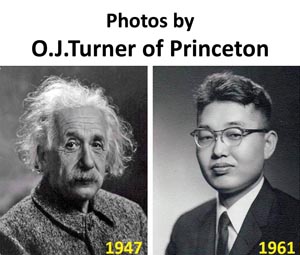
|
| Why is he with Einstein? |
This webpage was constructed by Y.S.Kim.
- Click here for his home page.
- His Einstein page.
- His Princeton page page.
- His style page.